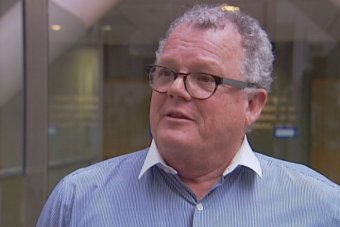More than a dozen patients at the Royal Adelaide Hospital have been treated outside of the emergency department, due to overcrowding issues.
Ambulance figures show all major hospitals were running at overcapacity over night, but only the Royal Adelaide Hospital had to treat people in ambulances outside the emergency department.
The incident lasted about three hours and SA Health insisted patient care was not compromised.
SA Health refused to call it a ‘ramping issue’ instead saying it was “external triaging”.
But Ambulance Employees Association state secretary Phil Palmer dismissed that terminology.
“Any time an ambulance is left outside an [emergency department], waiting to get inside the department, that’s ramping,” he said.
“They can call it whatever they like, but it’s ramping.”
Mr Palmer said ambulance staff received text messages last night alerting them that every hospital was full.
Earlier in the month, most non-urgent elective surgery in Adelaide’s public hospitals was cancelled and eight patients were transferred to neighbouring regional hospitals.
The measures were part of the public health system’s winter demand management plan, and were implemented after the system experienced one of its busiest days this winter.
Mr Palmer said he thought more patients would start to be transferred out again today.
“They are going to start shunting patients out all over the place to near, urban country hospitals, wherever they can find a bed outside the major public hospital system,” he said.
Ambulances can’t help a community when they are stuck on a ramp in a hospital. The patient gets good care – the patient that’s in the ambulance – but the patients that are in the community get no care.
Phil Palmer, Ambulance Employees Association
Mr Palmer was critical of the health system and said hospitals needed to be prepared for influxes of patients during peak flu season.
“The solution is to have a hospital system where there is enough capacity to handle all the patients that are going to come in and plus a bit extra when there are unexpected surges,” he said.
“And for goodness sake, this is August, you don’t even need to look at the data, you just need to be around a while – every August is a really busy time, particularly at South Australian hospitals.
“It’s the peak of the flu, respiratory season. Every second person has a cold of one degree of another, it’s always going to be like this.”
Mr Palmer said while patients would still get quality of care in ambulances, ramping was putting undue stress on ambulance staff.
He also said while ambulances were stuck at hospitals, the rest of community was not getting the care it needed.
“Ambulances can’t help a community when they are stuck on a ramp in a hospital,” he said.
“The patient gets good care – the patient that’s in the ambulance – but the patients that are in the community get no care.”
SA Health said it would investigate the issue.

